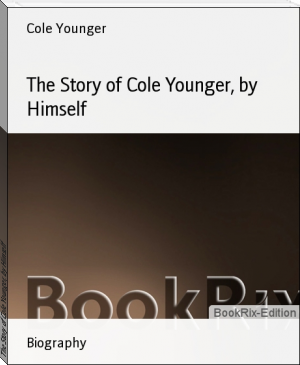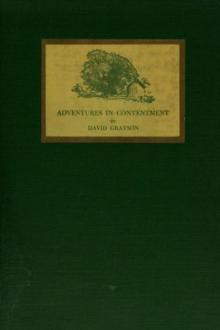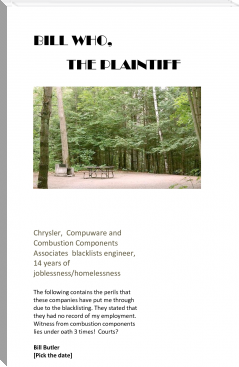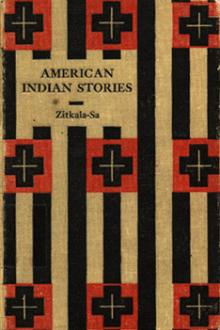The Story of Cole Younger, by Himself by Cole Younger (positive books to read TXT) 📖

Download in Format:
- Author: Cole Younger
Book online «The Story of Cole Younger, by Himself by Cole Younger (positive books to read TXT) 📖». Author Cole Younger
charge of the militia at Harrisonville, again charging that I was a spy. I never doubted that his action was due to the enmity of Walley. My parents wanted me to go away to school. I would have liked to have stayed and fought it out, and although I consented to go away, it was too late, and I was left no choice as to fighting it out. Watch was being kept for me at every railroad station, and the only school I could reach was the school of war close at home.
Armed with a shot-gun and revolver, I went out into the night and was a wanderer.
Instant death to all persons bearing arms in Missouri was the edict that went forth Aug. 30 of that year from Gen. John C. Fremont’s headquarters at St. Louis, and he declared that all slaves belonging to persons in arms against the United States were free. President Lincoln promptly overruled this, but it had added to the bitterness in Missouri where many men who owned slaves were as yet opposed to secession.
It was “hide and run for it” with me after that. That winter my brother-in-law, John Jarrette, and myself, joined Capt. Quantrell’s company. Jarrette was orderly sergeant. He never knew fear, and the forty that then made up the company were as brave men as ever drew breath.
We were not long quiet. Burris had a detachment raiding in the neighborhood of Independence. We struck their camp at sunset. We were thirty-two; they eighty-four; but we were sure shots and one volley broke their ranks in utter confusion. Five fell at the first fire, and seven more died in the chase, the others regaining Independence, where the presence of the rest of the regiment saved them. That day my persistent pistol practice showed its worth when one of the militiamen fell, 71 yards away, actual measure. That was Nov. 10, 1861.
All that winter Independence was the scene of a bloody warfare. One day early in February Capt. Quantrell and David Pool, Bill Gregg and George Shepherd, George Todd and myself, charged in pairs down three of the streets to the court house, other members of the company coming through other streets. We had eleven hurt, but we got away with ammunition and other supplies that were badly needed. Seven militiamen died that day.
Another charge, at daybreak of Feb. 21, resulted badly. Instead of the one company we expected to find, there were four. Although we killed seventeen, we lost one, young George, who fell so close to the guns of the foe that we had considerable difficulty in getting him away for burial. Then we disbanded for a time. Capt. Quantrell believed that it was harder to trail one man than a company, and every little while the company would break up, to rally again at a moment’s notice.
4. THE TRAP THAT FAILED
In March Quantrell planned to attack Independence. We met at David George’s and went from there toward Independence as far as Little Blue church, where Allen Parmer, who afterward married Susie James, the sister of Frank and Jesse, told the captain that instead of there being 300 Jayhawkers in Independence, there were 600. The odds were too strong, and we swung around to the southwest.
Thirteen soldiers who guarded the bridge at the Big Blue found their number unlucky. The bridge was burned and we dined that day at the home of Alex. Majors, of Russell, Majors & Waddell, the freighters, and rested for the night at Maj. Tale’s house, near New Santa Fe, where there was fighting for sure before morning.
A militia command, 300 strong, came out to capture us, but they did not risk an attack until nearly midnight.
Capt. Quantrell, John Jarrette, and I were sleeping together when the alarm was given, the sentry’s challenge, “Who are you?” followed by a pistol shot.
We were up on the instant.
So stealthy had been their approach that they had cut the sentry off from us before alarming him, and he fled into the timber in a shower of lead.
There was a heavy knock on the outer door, and a deep voice shouted: “Make a light.”
Quantrell, listening within, fired through the panel. The visitor fell.
While we barricaded the windows with bedding, the captain polled his men. “Boys,” he said, “we’re in a tight place. We can’t stay here and I do not mean to surrender. All who want to follow me out can say so; all who prefer to give up without a rush can also say so. I will do the best I can for them.”
Four voted to surrender, and went out to the besieging party, leaving seventeen.
Quantrell, James Little, Hoy, Stephen Shores and myself held the upper story, Jarrette, George Shepherd, Toler and others the lower.
Anxious to see who their prisoners were, the militiamen exposed themselves imprudently, and it cost them six.
Would they permit Major Tate’s family to escape? Yes. They were only too glad, for with the family out, the ell, which was not commanded by our fire, offered a tempting mark for the incendiary.
Hardly had the Tales left than the flames began to climb the ell.
There was another parley. Could we have twenty minutes? Ten? Five?
Back came the answer:
“You have one minute. If at its expiration you have not surrendered, not a single man among you shall escape alive.”
“Thank you,” said I; “catching comes before hanging.”
“Count six then and be d—d to you!” shouted back George Shepherd, who was doing the dickering, and Quantrell said quietly, “Shotguns to the front.”
There were six of these, and behind them came those with revolvers only. Then Quantrell opened the door and leaped out. Close behind him were Jarrette, Shepherd, Toler, Little, Hoy and myself, and behind us the revolvers.
In less time than it takes to tell it, the rush was over. We had lost five, Hoy being knocked down with a musket and taken prisoner, while they had eighteen killed and twenty-nine wounded. We did not stop till we got to the timber, but there was really no pursuit. The audacity of the thing had given the troops a taste of something new.
They kept Hoy at Leavenworth for several months and then hanged him. This was the inevitable end of a “guerrilla” when taken prisoner.
5. VENGEANCE INDEED
Among the Jackson county folks who insisted on their right to shelter their friends was an old man named Blythe.
Col. Peabody at Independence had sent out a scouting party to find me or any one else of the company they could “beat up.” Blythe was not at home when they came but his son, aged twelve, was. They took him to the barn and tried to find out where we were, but the little fellow baffled them until he thought he saw a chance to break through the guard, and started for the house.
He reached it safely, seized a pistol, and made for the woods followed by a hail of bullets. They dropped him in his tracks, but, game to the last, he rolled over as he fell, shot one of his pursuers dead, mortally wounded a second, and badly hurt a third.
They put seventeen bullets in him before he could shoot a fourth time.
A negro servant who had witnessed the seizure of his young master, had fled for the timber, and came upon a party of a dozen of us, including Quantrell and myself. As he quickly told us the story, we made our plans, and ambushed at the “Blue Cut,” a deep pass on the road the soldiers must take back to Independence. The banks are about thirty feet high, and the cut about fifty yards wide.
Not a shot was to be fired until the entire command was in the cut.
Thirty-eight had started to “round up” Cole Younger that morning; seventeen of them lay dead in the cut that night and the rest of them had a lively chase into Independence.
To this day old residents know the Blue Cut as “the slaughter-pen.”
Early in May, 1862, Quantrell’s men were disbanded for a month. Horses were needed, and ammunition. There were plenty of horses in Missouri, but the ammunition presented more of a problem.
Capt. Quantrell, George Todd and myself, attired as Union officers, went to Hamilton, a small town on the Hannibal and St. Joseph Railroad, undetected by the company of the Seventh United States Cavalry in camp there, although we put up at the principal hotel. Todd passed as a major in the Sixth Missouri Cavalry, Quantrell a major in the Ninth, and I a captain in an Illinois regiment. At Hannibal there was a regiment of Federal soldiers. The commander talked very freely with us about Quantrell, Todd, Haller, Younger, Blunt, Pool and other guerrillas of whom he had heard.
While in Hannibal we bought 50,000 revolver caps and such other ammunition as we needed. From there we went to St. Joseph, which was under command of Col. Harrison B. Branch.
“Too many majors traveling together are like too many roses in a bouquet,” suggested Todd. “The other flowers have no show.”
He reduced himself to captain and I to lieutenant.
Our disguise was undiscovered. Col. Branch entertained us at his headquarters most hospitably.
“I hope you may kill a guerrilla with every bullet I have sold you,” said one merchant to me. “I think if ever there was a set of devils let loose, it is Quantrell, Todd, Cole Younger and Dave Pool.”
From St. Joseph we went to Kansas City in a hack, sending Todd into Jackson county with the ammunition. When within three miles of Kansas City the hack was halted by a picket on outpost duty, and while the driver argued with the guard, Quantrell and I slipped out on the other side of the hack and made our way to William Bledsoe’s farm, where we were in friendly hands.
6. IN THE ENEMY’S LINES
Col. Buell, whose garrison of 600 held Independence, had ordered that every male citizen of Jackson county between 18 and 45 years of age should fight against the South.
Col. Upton Hays, who was in Jackson county in July and August, 1862, recruiting a regiment for the Confederate army, decided that it was the time to strike a decisive blow for the dislodging of Buell. In reconnoitering the vicinity he took with him Dick Yager, Boone Muir and myself, all of whom had seen service with Capt. Quantrell.
It was finally decided to make the attack August 11th. Colonel Hays wanted accurate information about the state of things inside town.
“Leave that to me,” said I.
Three days remained before the battle.
Next morning there rode up to the picket line at Independence an old apple-woman, whose gray hair and much of her face was nearly hidden by an old-fashioned and faded sun-bonnet. Spectacles half hid her eyes and a basket on her arm was laden with beets, beans and apples.
The left rein was leather but a rope replaced the right.
“Good morning, grandmother,” bantered the first picket. “Does the rebel crop need any rain out in your country?”
The sergeant at the reserve post seized her
Armed with a shot-gun and revolver, I went out into the night and was a wanderer.
Instant death to all persons bearing arms in Missouri was the edict that went forth Aug. 30 of that year from Gen. John C. Fremont’s headquarters at St. Louis, and he declared that all slaves belonging to persons in arms against the United States were free. President Lincoln promptly overruled this, but it had added to the bitterness in Missouri where many men who owned slaves were as yet opposed to secession.
It was “hide and run for it” with me after that. That winter my brother-in-law, John Jarrette, and myself, joined Capt. Quantrell’s company. Jarrette was orderly sergeant. He never knew fear, and the forty that then made up the company were as brave men as ever drew breath.
We were not long quiet. Burris had a detachment raiding in the neighborhood of Independence. We struck their camp at sunset. We were thirty-two; they eighty-four; but we were sure shots and one volley broke their ranks in utter confusion. Five fell at the first fire, and seven more died in the chase, the others regaining Independence, where the presence of the rest of the regiment saved them. That day my persistent pistol practice showed its worth when one of the militiamen fell, 71 yards away, actual measure. That was Nov. 10, 1861.
All that winter Independence was the scene of a bloody warfare. One day early in February Capt. Quantrell and David Pool, Bill Gregg and George Shepherd, George Todd and myself, charged in pairs down three of the streets to the court house, other members of the company coming through other streets. We had eleven hurt, but we got away with ammunition and other supplies that were badly needed. Seven militiamen died that day.
Another charge, at daybreak of Feb. 21, resulted badly. Instead of the one company we expected to find, there were four. Although we killed seventeen, we lost one, young George, who fell so close to the guns of the foe that we had considerable difficulty in getting him away for burial. Then we disbanded for a time. Capt. Quantrell believed that it was harder to trail one man than a company, and every little while the company would break up, to rally again at a moment’s notice.
4. THE TRAP THAT FAILED
In March Quantrell planned to attack Independence. We met at David George’s and went from there toward Independence as far as Little Blue church, where Allen Parmer, who afterward married Susie James, the sister of Frank and Jesse, told the captain that instead of there being 300 Jayhawkers in Independence, there were 600. The odds were too strong, and we swung around to the southwest.
Thirteen soldiers who guarded the bridge at the Big Blue found their number unlucky. The bridge was burned and we dined that day at the home of Alex. Majors, of Russell, Majors & Waddell, the freighters, and rested for the night at Maj. Tale’s house, near New Santa Fe, where there was fighting for sure before morning.
A militia command, 300 strong, came out to capture us, but they did not risk an attack until nearly midnight.
Capt. Quantrell, John Jarrette, and I were sleeping together when the alarm was given, the sentry’s challenge, “Who are you?” followed by a pistol shot.
We were up on the instant.
So stealthy had been their approach that they had cut the sentry off from us before alarming him, and he fled into the timber in a shower of lead.
There was a heavy knock on the outer door, and a deep voice shouted: “Make a light.”
Quantrell, listening within, fired through the panel. The visitor fell.
While we barricaded the windows with bedding, the captain polled his men. “Boys,” he said, “we’re in a tight place. We can’t stay here and I do not mean to surrender. All who want to follow me out can say so; all who prefer to give up without a rush can also say so. I will do the best I can for them.”
Four voted to surrender, and went out to the besieging party, leaving seventeen.
Quantrell, James Little, Hoy, Stephen Shores and myself held the upper story, Jarrette, George Shepherd, Toler and others the lower.
Anxious to see who their prisoners were, the militiamen exposed themselves imprudently, and it cost them six.
Would they permit Major Tate’s family to escape? Yes. They were only too glad, for with the family out, the ell, which was not commanded by our fire, offered a tempting mark for the incendiary.
Hardly had the Tales left than the flames began to climb the ell.
There was another parley. Could we have twenty minutes? Ten? Five?
Back came the answer:
“You have one minute. If at its expiration you have not surrendered, not a single man among you shall escape alive.”
“Thank you,” said I; “catching comes before hanging.”
“Count six then and be d—d to you!” shouted back George Shepherd, who was doing the dickering, and Quantrell said quietly, “Shotguns to the front.”
There were six of these, and behind them came those with revolvers only. Then Quantrell opened the door and leaped out. Close behind him were Jarrette, Shepherd, Toler, Little, Hoy and myself, and behind us the revolvers.
In less time than it takes to tell it, the rush was over. We had lost five, Hoy being knocked down with a musket and taken prisoner, while they had eighteen killed and twenty-nine wounded. We did not stop till we got to the timber, but there was really no pursuit. The audacity of the thing had given the troops a taste of something new.
They kept Hoy at Leavenworth for several months and then hanged him. This was the inevitable end of a “guerrilla” when taken prisoner.
5. VENGEANCE INDEED
Among the Jackson county folks who insisted on their right to shelter their friends was an old man named Blythe.
Col. Peabody at Independence had sent out a scouting party to find me or any one else of the company they could “beat up.” Blythe was not at home when they came but his son, aged twelve, was. They took him to the barn and tried to find out where we were, but the little fellow baffled them until he thought he saw a chance to break through the guard, and started for the house.
He reached it safely, seized a pistol, and made for the woods followed by a hail of bullets. They dropped him in his tracks, but, game to the last, he rolled over as he fell, shot one of his pursuers dead, mortally wounded a second, and badly hurt a third.
They put seventeen bullets in him before he could shoot a fourth time.
A negro servant who had witnessed the seizure of his young master, had fled for the timber, and came upon a party of a dozen of us, including Quantrell and myself. As he quickly told us the story, we made our plans, and ambushed at the “Blue Cut,” a deep pass on the road the soldiers must take back to Independence. The banks are about thirty feet high, and the cut about fifty yards wide.
Not a shot was to be fired until the entire command was in the cut.
Thirty-eight had started to “round up” Cole Younger that morning; seventeen of them lay dead in the cut that night and the rest of them had a lively chase into Independence.
To this day old residents know the Blue Cut as “the slaughter-pen.”
Early in May, 1862, Quantrell’s men were disbanded for a month. Horses were needed, and ammunition. There were plenty of horses in Missouri, but the ammunition presented more of a problem.
Capt. Quantrell, George Todd and myself, attired as Union officers, went to Hamilton, a small town on the Hannibal and St. Joseph Railroad, undetected by the company of the Seventh United States Cavalry in camp there, although we put up at the principal hotel. Todd passed as a major in the Sixth Missouri Cavalry, Quantrell a major in the Ninth, and I a captain in an Illinois regiment. At Hannibal there was a regiment of Federal soldiers. The commander talked very freely with us about Quantrell, Todd, Haller, Younger, Blunt, Pool and other guerrillas of whom he had heard.
While in Hannibal we bought 50,000 revolver caps and such other ammunition as we needed. From there we went to St. Joseph, which was under command of Col. Harrison B. Branch.
“Too many majors traveling together are like too many roses in a bouquet,” suggested Todd. “The other flowers have no show.”
He reduced himself to captain and I to lieutenant.
Our disguise was undiscovered. Col. Branch entertained us at his headquarters most hospitably.
“I hope you may kill a guerrilla with every bullet I have sold you,” said one merchant to me. “I think if ever there was a set of devils let loose, it is Quantrell, Todd, Cole Younger and Dave Pool.”
From St. Joseph we went to Kansas City in a hack, sending Todd into Jackson county with the ammunition. When within three miles of Kansas City the hack was halted by a picket on outpost duty, and while the driver argued with the guard, Quantrell and I slipped out on the other side of the hack and made our way to William Bledsoe’s farm, where we were in friendly hands.
6. IN THE ENEMY’S LINES
Col. Buell, whose garrison of 600 held Independence, had ordered that every male citizen of Jackson county between 18 and 45 years of age should fight against the South.
Col. Upton Hays, who was in Jackson county in July and August, 1862, recruiting a regiment for the Confederate army, decided that it was the time to strike a decisive blow for the dislodging of Buell. In reconnoitering the vicinity he took with him Dick Yager, Boone Muir and myself, all of whom had seen service with Capt. Quantrell.
It was finally decided to make the attack August 11th. Colonel Hays wanted accurate information about the state of things inside town.
“Leave that to me,” said I.
Three days remained before the battle.
Next morning there rode up to the picket line at Independence an old apple-woman, whose gray hair and much of her face was nearly hidden by an old-fashioned and faded sun-bonnet. Spectacles half hid her eyes and a basket on her arm was laden with beets, beans and apples.
The left rein was leather but a rope replaced the right.
“Good morning, grandmother,” bantered the first picket. “Does the rebel crop need any rain out in your country?”
The sergeant at the reserve post seized her
Free ebook «The Story of Cole Younger, by Himself by Cole Younger (positive books to read TXT) 📖» - read online now
Similar e-books:





Comments (0)